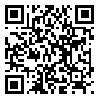BibTeX | RIS | EndNote | Medlars | ProCite | Reference Manager | RefWorks
Send citation to:
URL: http://jdisabilstud.org/article-1-917-en.html
Abstract
Background & Objective: This article deals with analyzing the architectural situation of three Deaf & Hard-of-Hearing primary schools. Regarding the importance of the educational space in Learning and the Deaf relationship, this research is necessary to do. Moreover, no similar research is done, so far, which makes this study unique.
Methods: This study is carried out by an analytical-descriptive method. In the first step, based on studies done at Gallaudet University and American with Disability Acts (ADA) and Building Bulletin 93 related to suggested standards of British. Association for Deaf teachers, effective factors on designing proper educational space for Deaf & Hard-of-Hearing primary and components of each factor were extracted. Then the research checklist was prepared and the educational situation of three Deaf & Hard-of-Hearing primary schools in Isfahan.
Results: By analyzing the data for this study, which is, in facts, comparing the architectural situation of the three primary schools for? In Isfahan with the gained standards out of the studies on other countries (in the form of a researcher'’ checklist), it is found out that the architectures of primary schools for of Deaf & Hard of Hearing in Isfahan is not suitable for them. Furthermore, despite the fact that the educational space is so effective in learning the quality of Deaf & Hard-of-Hearing students, these three are not designed and built the same as schools for normal school children, and they are not easy to access for them in on the appropriate location. They are not acoustically designed and suitable building materials not used either. Regarding colors, in all the above-mentioned primary schools. Beige is used, which is closely similar to the skin color which is not good for Deaf students’ educational spaces. Moreover, 66% of those school's fire is not equipped with fire alarms. Just one school in one class had a fire alarm and only one school had two emergency exits. One hundred percent of these schools had to suitable glass protection for heaters. None of the schools had no suitable equipment and furniture like armchairs’ bells with lights, video telephones, etc. By analyzing the situation of these schools in terms of safety in yards and halls; no sharp barriers such as poles did not exist and there were ramps in just two schools. In two schools, doors opened outward. In no schools, round angles were used. In 66% of schools, there were double-edged windows. In just one school glass of windows was safer by sticking mat covers on them. All Halls and paths were 2.5 meters wide, which is quite suitable.
Conclusion: Although in many countries, churches, cultural centers, schools, houses, shops & etc.; are suitable for the above-mentioned people, they are not appropriate for them in Iran. Suitable lighting and choosing colors, as well as building materials, can be helpful for learning improvement. Type of building materials is of great help in shaking management, finding directions and identifying dangers. Since Deaf & Hard-of-Hearing student is mostly dependent on touching, smelling and seeing senses, designing on open space in an educational center plays an important role in learning better. These spaces should create a signification relationship between the interior and outside space. The outside yard can be a good place for children to play, talk, interact, learn and search. Using central yards and mixing the space and outdoors with classrooms can be very useful.
| Rights and permissions | |
 |
This work is licensed under a Creative Commons Attribution-NonCommercial 4.0 International License. |




